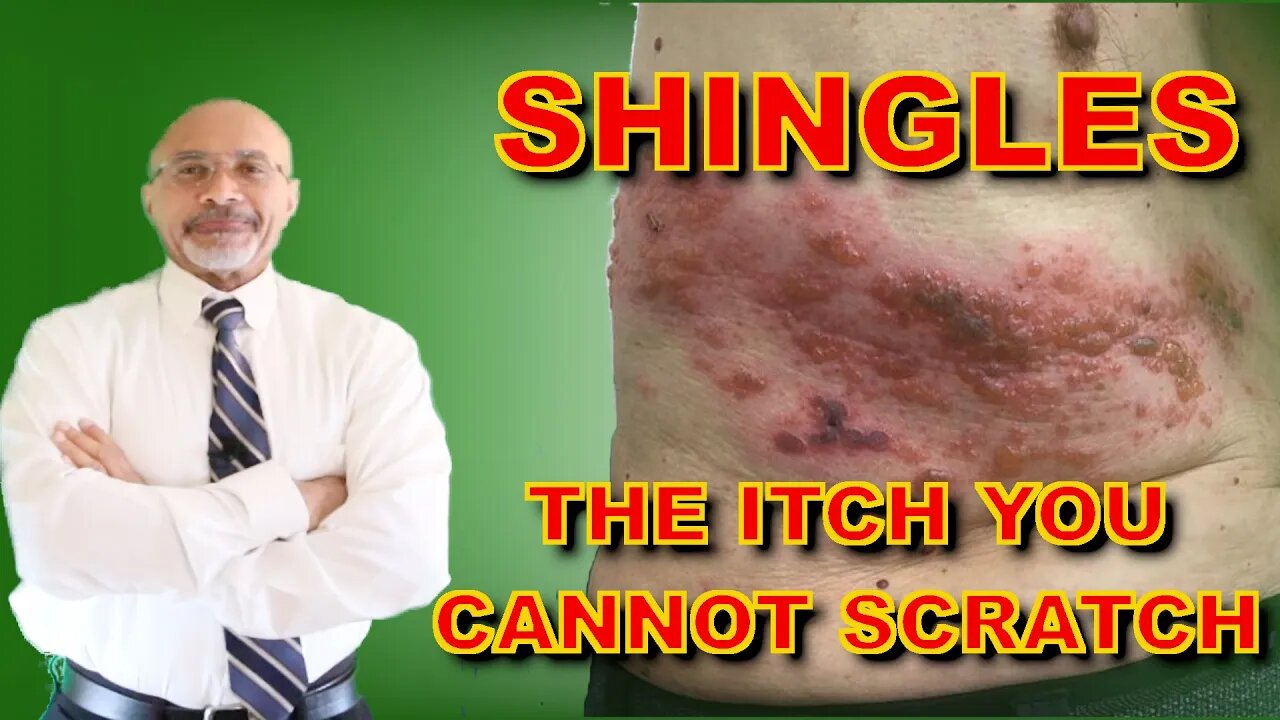Premium Only Content

Shingles (Why The Itch Is Hard To Treat)
PHI or Post Herpetic Itch is a serious complication of shingles that rarely do we hear about. That is because, among the complications of shingles, it is the one patients report the least to their providers. This is mainly because it is overshadowed by PHN in most patients. For those people with shingles, however, who develop PHI, it is one of the most challenging diagnoses, because it is difficult to treat. Recently, scientists have been able to decipher much of the etiology of this enigmatic condition, although the exact pathogenesis remains a mystery. With the new understanding of PHI, the treatment of this complication of shingles has received more effective treatments, albeit far from perfect ones. The realization that pathologic itch is a neurological condition has permitted the introduction of targeted therapy, yet this complication of shingles remains a challenge to treat. TTS-Trigeminal Trophic Syndrome directly results from shingles induced pathological itch, and providers and patients alike are fooled into thinking that chronic ulcers cause the often recalcitrant itching that follows bouts of shingles that precipitate this condition. The constant scratching that is precipitated by PHI can have serious consequences. Providers who treat patients with shingles need to be aware of this condition and its peculiar etiology, since many of the usual therapies will not work. When patients with shingles are aware of conditions such as PHI, they can ask questions and learn more about their condition. That way, they can take an active part in their care. Shingles can have serious complications and PHI is one of them.
TTS Image courtesy of : Kumar P, Thomas J. Trigeminal trophic syndrome. Indian J Dermatol. 2014 Jan;59(1):75-6. doi: 10.4103/0019-5154.123506. PMID: 24470665; PMCID: PMC3884933.
-
 4:29
4:29
Candid Conversations with Dr. Lowe
1 month agoSuperfoods: The One You MUST Have In Your Diet!
931 -
 2:16:49
2:16:49
TheSaltyCracker
4 hours agoMusk Destroys Gov't Money Pot ReeEEeE Stream 02-05-25
110K195 -
 1:10:59
1:10:59
FreshandFit
3 hours agoTop 3 Ways To Overcome A Break Up
31K3 -
 LIVE
LIVE
Akademiks
5 hours agoDrake Finally CUTS off FAKE FRIENDS in the Industry. VIOLATES KHALED, LEBRON! Announces album Feb14
3,043 watching -
 27:28
27:28
Glenn Greenwald
8 hours agoGlenn Reacts to Trump's Gaza Take Over: System Update Special
141K249 -
 2:13:49
2:13:49
Melonie Mac
4 hours agoGo Boom Live Ep 36!
68.8K9 -
 1:02:11
1:02:11
Sarah Westall
5 hours agoFreezing USAID & its Operations in Ukraine: A Massive Money Laundering Organization? w/ Sam Anthony
68.2K5 -
 2:05:35
2:05:35
Space Ice
8 hours agoSpace Ice & Redeye: Neil Breen's Pass Thru
23K1 -
 1:00:23
1:00:23
The StoneZONE with Roger Stone
4 hours agoRoger Stone Talks Trump’s Electric First 100 Day Agenda | The StoneZone w/ Roger Stone
29.2K7 -
 DVR
DVR
Redacted News
8 hours agoBREAKING! EPSTEIN LIST INCOMING UNDER AG PAM BONDI? DEMOCRATS FREAKING OUT, PRINCE ANDREW NERVOUS
174K246